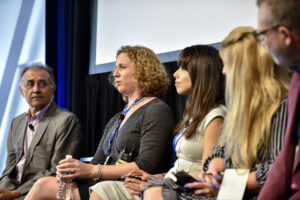5 Priorities for 2025: How HR Leaders Plan to Meet a New Wave of Change
In 2025, HR will be at yet another inflection point. With high levels of employee detachment, anxiety about the arrival of AI, and a huge demand for new skills, corporate CEOs are saying to their chief people officers (CPOs): We need you to fix these things. And by the way, restructure how your own HR operations run–and keep spirits high too!It’s a lot, but chief HR officers are gearing up for another wave of change, even after the incessant disruption in the five years since the pandemic arrived. The consulting firm Heidrick & Struggles interviewed 70 chief people officers around the world about what it takes to do the job. Jennifer Wilson, the co-head of the global HR-officers practice at the firm, wasn’t surprised by the substance of their findings—artificial intelligence, generational changes, and the need to adapt to a stream of curveballs are all priorities they expected to find. What surprised her is the urgency that CPOs expressed, and the evidence that CEOs are leaning so heavily on them for answers. CPOs are super-connectors, the report says, with demands on their attention coming from all sides. As a result, “progressive organizations are playing with their HR functional models,” Wilson said.From Day One spoke to HR leaders and the consultants who work with them about their plans for the new year. Among the myriad responsibilities on their plate, what will they focus on in 2025? This is what they told us they plan to do.Renew the Focus on Company CultureSpeculation about the future of work once conjured images of workers zipping around the office on hoverboards, said Dan Kaplan, senior partner at consulting firm Korn Ferry. Now, futurists train their focus on culture. “It should be the guiding light for companies,” he said, but “they’ve gotten away from that.”The percentage of U.S. workers who say they’re thriving in life has hit a record low: Just 50% of workers Gallup surveyed in 2024 are feeling good about their current life and future prospects, a figure that has declined in the past decade. Gallup also found that employees are detached from their jobs. The chief culprit: rapid organizational changes and the persistent uncertainty around flexible work schedules. If CPOs are still fighting with their CEOs and boards about workers returning to office in 2025, “then you’ve lost,” Kaplan said. The HR leaders who will win are those that can push executives closer to their employees, and inspire them to deliver.Elaine Becraft, the SVP of HR at global medical-tech company Siemens Healthineers, believes that company culture must connect workers to each other and to the mission of the business. Long gone are the days of clocking in and clocking out to collect a paycheck. In 2025, she’s going to focus on holistic employee care.Workers need a new relationship with their employers, and that responsibility has been handed to HR. “There is a recognition that the workforce overall is tired,” said Wilson at Heidrick & Struggles. “We’ve been through a lot over the last few years. The nature of work is changing. Mental health issues in the western world are more prominent than they’ve been in the past, and that’s really become a reality for chief people officers.”Get to the Next Steps on AIArtificial intelligence is unavoidable, but there’s a gap between expectations by CEOs and the actual embrace of AI by workers. “So far, employee adoption of AI in the workplace is lagging behind the hype,” Gallup reports. If your company isn’t an early adopter, it’s probably trying to catch up. Among the innovators is media agency VML, where the global head of organizational development, Loren Blandon, is prioritizing AI upskilling. “In our industry, it’s really critical that we position ourselves as a leader in integrative use, application, adoption, and innovation of AI. We need people fully embracing and using it,” she told From Day One.How do you get world-class creatives to adopt technology that poses an immediate threat to their jobs? “You have to show them that it’s going to amplify their work,” Blandon said. “Then you get them to understand that whether you accept this or not, it’s coming, and it’s in your best interest to start using it rather than fighting yourself into being obsolete.” She’s found that many who dig in their heels just haven’t experimented with AI yet. But when you invite them in and show them how to play, the wheels start turning, and suddenly it’s cool.Ninety-one percent of early-adopting firms report positive results with AI, including increased productivity and cost-savings, according to a report from the Institute for Corporate Productivity, or i4cp. And companies that operationalize AI will outpace their peers.Workforce concerns about AI will continue, with employees anxious about their being displaced or replaced. “That has landed in the CPO’s lap,” said Wilson. HR executives are responsible for equipping the workforce with AI skills, but with no precedents for use, it’s still not always clear when, where, how, or why they’re meant to apply those skills–at least not yet. Of course, HR has its own misgivings about AI encroaching on its territory, and CPOs will have to quell concerns from their own teams at the same time they upskill their colleagues.Invest in the Skills-Based WorkforceForget the traditional concept of a job. It’s a skills-based world now, with much more malleable definitions of roles and projects. And “until companies shift their cultures, efforts to scale skills-based marketplaces will stall,” i4cp’s report says.In a skills-based workforce, employees flow from one assignment to the next, pick up skills in fractional roles, dip into new teams with temporary projects, and volunteer their expertise in new departments. Ideally, all work is promotable and company tenure is no longer a deciding factor. There’s a large share of the workforce that may be attracted to the fluidity of skills-based work. Sixty-five percent of workers feel stuck in their current roles, according to a Glassdoor survey, a situation that can breed resentment. “It used to be that you stepped into a defined job with tasks, and that was your role all the time. Now it’s more project-based,” said VML’s Blandon. For one team you might be the brand leader, and for another you’re the project manager. “I think jobs need to be fundamentally redesigned to tap into people’s ‘gig desires.’ They want to bring more skill sets to the table. They want to explore more things, and I think we can be savvy in leveraging that.”Maintain a Commitment to DEI, But Change the LanguageDespite recent high-profile changes in diversity, equity, and inclusion (DEI) programs by the likes of Walmart and Ford in the face of anti-DEI activists, the overall corporate commitment to DEI’s principles isn’t dead. “Activists are overstating the surface-level changes many companies are making to get rid of the heat,” CNN reported this week based on a review of company policies. “Nearly all the largest companies in America still say they are committed to promoting DEI.”Companies are motivated to persist with the principles of DEI because, in an increasingly diverse population, it has been proven to be good for the bottom line, as well as employee retention and motivation. That said, companies still want to avoid the political flak, so they have shifted the emphasis of their language, focusing more on inclusion and belonging. The values have already been operationalized and, in some cases, leaders have asserted that they have not abandoned those values, but are waiting to see what the temperature will be under a second Trump Administration before speaking out more.How can HR make sure thier companies evolve their practices, and not just the labels? The NeuroLeadership Institute’s DEI Impact Case recommends three actions that organizations can take to maintain their investments in DEI, no matter what they’re calling it, as Fast Company reports: “prioritize diversity by aligning it with specific business goals, habituate inclusion through targeted learning and performance tools that integrate it into daily practices, and systemize equity by examining policies and procedures to embed and sustain fairness throughout.”Reshape Organizational StructuresThe new skills-based economy is shaking up corporate structures, and companies are “delayering” their organizations, removing expensive middle managers believed by some to stymie productivity, while companies are also trying to teach managers to be more effective. Blandon says we’re due. “When was the last time we truly thought about reframing that? Manager, subordinate. It hasn’t been really tweaked in a long time, and people are questioning it.”Some companies are delayering to usher in the next generation of executives. Baby Boomers in the C-suite are retiring, and “you’ve got to get that next layer ready,” Wilson said. As vacancies open en masse, “how do you make sure that you don’t have business disruption from that newness?”Kaplan hopes that a shallow hierarchy will shrink the distance between the CEO and the rank and file–and motivate the workforce. “The CEO should be the most inspiring leader in the company,” he said, and by bringing workers closer to their leader, they may feel more connected to the company.At many comppanies, the HR department is getting a reorganization of its own. The traditional “centers of excellence” model, in which HR segments specialize in narrow disciplines, is on its way out, and a cross-functional model, in which HR teams are multi-skilled and capable of working with all departments, is gaining popularity. People ops no longer waits for requests, but goes problem-solving on its own. “We’re seeing agile teams form and disband for specific organizational issues,” said Wilson.Experiments abound. Some companies have moved all administrative tasks to a general shared-services center, leaving HR to “focus entirely on talent, leadership, succession, bench strength, organizational design, and [organizational development].” And, according to Wilson, this could be “a smart way to get HR out of the administrative chains that it’s been under for so many years.”Maybe it’s time for HR and people operations to get a new name? “Talent operations,” Wilson suggested, but then paused. Even that suggests the team is doing more admin than it really does, and the discipline continues to grow. “Maybe talent advisors?” Whatever the name, she said, it should demonstrate that talent is at the center of its responsibilities.“We’re like the lookout on a boat,” Becraft said about her team at Siemens Healthineers. “We see issues, challenges, and opportunities coming toward the company, and it’s our responsibility to bring those to the right people and make sure they understand what’s going on out there.”Emily McCrary-Ruiz-Esparza is a freelance journalist and From Day One contributing editor who writes about work, the job market, and women’s experiences in the workplace. Her work has appeared in the Economist, the BBC, The Washington Post, Quartz, Business Insider, and Fast Company.(Featured image: Photo by Kobus Louw/iStock by Getty Images)






